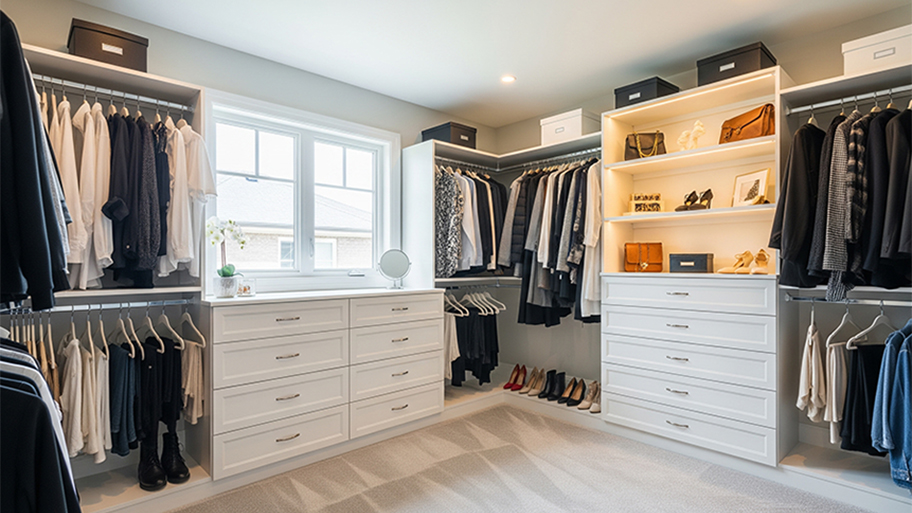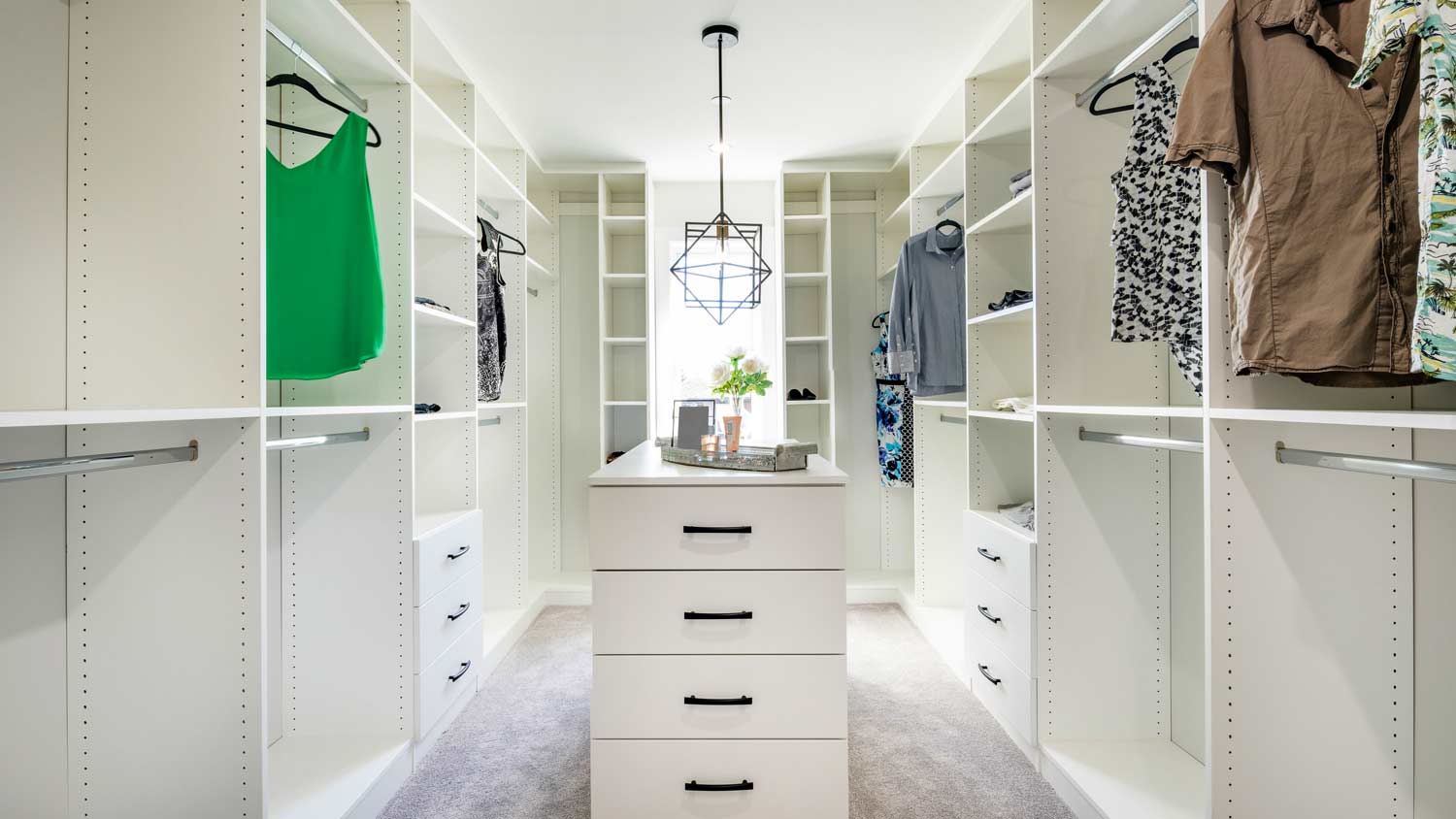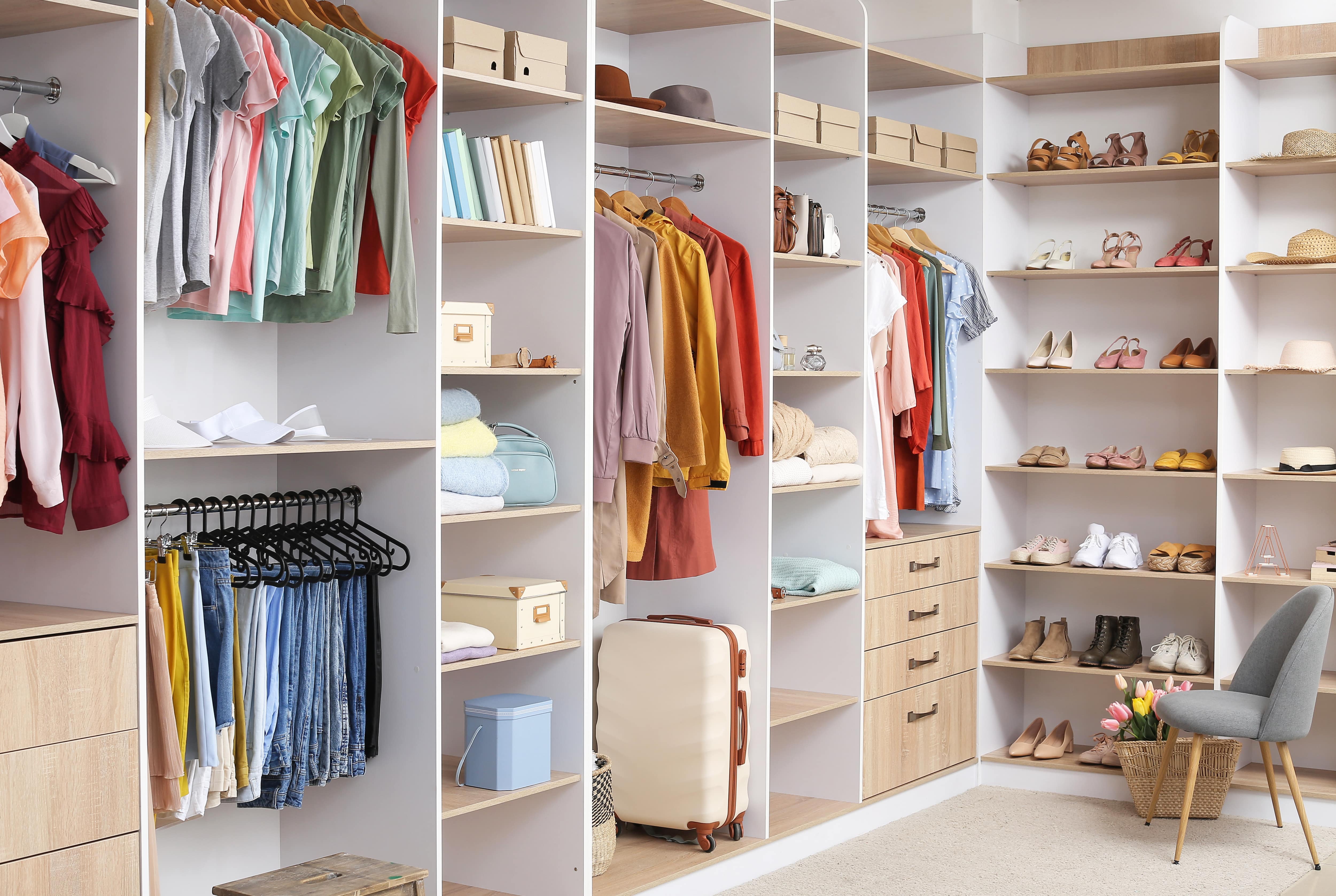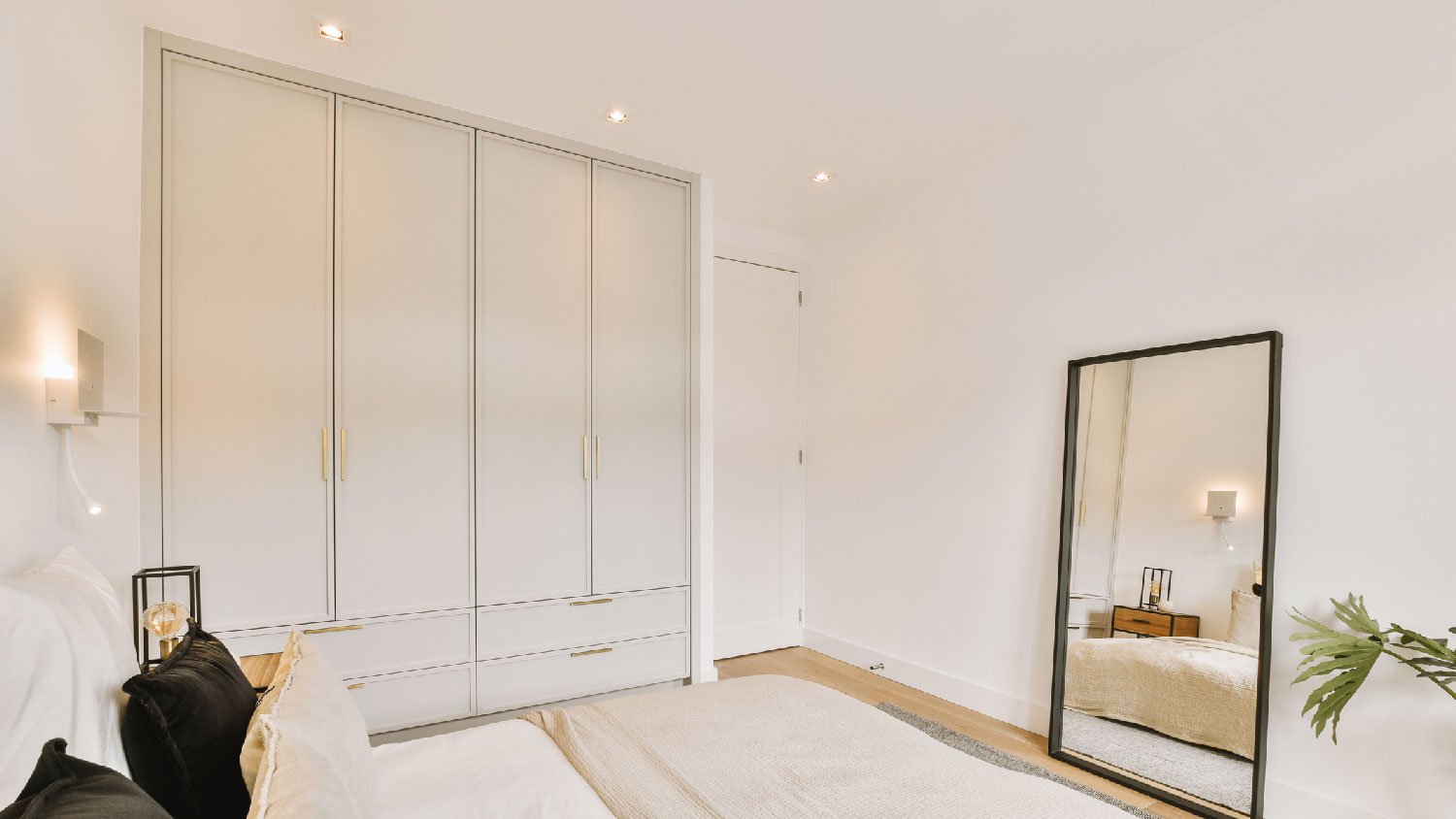
The cost of a closet remodel depends on the closet size, materials used, and the level of customization. Learn what else influences your closet remodel cost.
To build-in or walk-in? That is the question


A built-in wardrobe costs between $1,500 and $6,000.
A walk-in closet costs between $750 and $3,500.
Built-in wardrobes are a great solution for odd-shaped spaces.
Walk-in closets add more return on investment (ROI) than built-in wardrobes.
Both may store clothing, but there’s a world of difference when comparing built-in wardrobes versus walk-in closets. The built-in wardrobe is like a small closet with personalized clothing storage features. You can build it to fit snugly in whatever space you have at the room's edges. Meanwhile, the large walk-in closet can feel like walking into a dressing room at a high-end clothing store. Learn more about the pros and cons of each clothing storage choice.

Built-in wardrobes offer a custom, streamlined storage solution that looks like a small closet or cabinet from the outside, while walk-in closets give you a large storage space where you can organize hundreds of clothing items.

A built-in closet, also called a built-in wardrobe, is a custom storage solution for clothing items that’s built to fit a precise location in a bedroom. It uses customized drawers, shelves, and hanging rods to store your items behind stylish closet doors.
| Pros | Cons |
|---|---|
| Uses available space | Less space available |
| Can cost less than a walk-in closet | Not for small rooms |
| Custom storage design | Lower ROI option |
Best for:
People in an older home who may not have space for a walk-in closet
Those who prefer to keep fewer clothing items
People who don’t plan to sell the home in the near future
In some homes, bedrooms have odd shapes, sloping roof lines, and wasted space along the walls. A built-in wardrobe uses a custom design that takes full advantage of these spaces better than a freestanding dresser.
You can have built-in wardrobes installed to increase your storage capabilities without a major renovation. Consequently, the built-in wardrobe can be less expensive to install than building a walk-in closet from scratch.
You can customize the interior of the built-in wardrobe, adding drawers, shelves, hanging rods, and more. However, you must work around space limitations.
If you have a small bedroom already, the built-in wardrobe is going to steal some of that limited space. When looking at a built-in wardrobe versus a walk-in closet, the wardrobe has quite a bit less storage space. Of course, it doesn’t have the “wasted” space of a walk-in closet where you’d be able to stand in the closet and dress.
If you plan to sell your house soon, a built-in wardrobe will not yield the same return on investment (ROI) as a walk-in closet. The customized wardrobe may not appeal to all buyers, who may have different storage needs.

Walk-in closets provide all the storage advantages of closets while adding the ability to walk inside. You can dress or put on shoes in the closet. You can customize the storage accessories around the edges of the walk-in closet to make all the items easily visible and accessible.
| Pros | Cons |
|---|---|
| Large storage space | Major construction |
| Privacy for dressing | May need to add light |
| Increased home value | Can become cluttered |
Best for:
Those who have a large number of items to store
People who have newer, larger homes
Anyone considering selling the home in the near future
Walk-in closets are highly desirable storage options in a primary bedroom. If you are going to sell the home in a few years, adding a walk-in closet versus a built-in wardrobe should make your home more desirable to buyers and improve your ROI.
This is a large storage space for those who have a lot of clothing items or shoes. You can add multiple drawers, shelves, cubbies, cabinets, and hanging rods that accommodate your items and keep them organized.
You can customize the space to perfectly fit your needs, including giving you a private place to dress. If two people are sharing the walk-in closet, it’s easy to divide the space.
Adding a walk-in closet from scratch can be a difficult, pricey construction process. To make your walk-in closet large enough, you may need to borrow some space from a closet in an adjacent room (or from the room itself). You may also need help from an electrician to add enough lighting for the entire space.
Because of the wide-open space inside the walk-in closet and the ability to hide it behind a door, some people let the space get cluttered. You need to take the time to put items away after you use or wash them, or your large walk-in closet will quickly become a disorganized mess.
Choosing between built-in wardrobes and walk-in closets is easier if you pay attention to the categories that are most important to you. Here are the winners when it comes to appearance, customizations, price, and more.
Walk-in closets have quite an edge over built-in wardrobes when it comes to storage space. While built-ins can certainly offer space to store your belongings, walk-in closets tend to be larger and offer more options for storage customizations, like drawers, shelves, upper and lower rods, and floor space for boxes.
Because a walk-in closet is so large, you can add storage accessories that perfectly fit your needs. You can also change out some of the accessories to gain new storage features. With a built-in wardrobe, you can customize it at the time it’s built, but the limited space makes swapping out storage accessories later difficult.
A built-in wardrobe costs between $1,500 and $6,000, depending on the size and level of customization, while a walk-in closet costs between $750 and $3,500. So while most homeowners pay less for a walk-in closet, you can also build a small, simple built-in wardrobe for less than you’d pay for a large, customized walk-in closet. The price here really depends on the size, features, and material of the closet or wardrobe.
If you already have a walk-in closet, adding the organizational accessories can be a DIY job. You can also figure out how to make built-in shelves, cubbies, and hanging rods inside the existing space yourself. Building your own walk-in closet or constructing a built-in wardrobe from scratch is a job best left to a local closet maker, though.
In an older home or a bedroom with odd shapes and wasted space, you can make a built-in wardrobe designed to fit the space perfectly. You don’t need a lot of space for your wardrobe. The average walk-in closet dimensions, meanwhile, require about 7-by-10 feet.
Built-in wardrobes can’t store as many clothing items as a walk-in closet, which makes them easier to maintain and organize. The larger walk-in closet will have more items, such as drawers and cabinets, that may need repairing or paint touch-ups over time.
Once you invest in the construction needed to create a large walk-in closet, it will last as long as the home lasts. You can easily swap out the storage accessories inside the walk-in closet for new ones as your needs change or as items wear out. With a built-in wardrobe, it’s more difficult to change the design of the storage accessories to meet your changing needs.
If you are adding a walk-in closet, it should give your home a greater resale value. While adding a built-in wardrobe can add some value to your home, it likely won't have the same ROI impact as a walk-in closet. New buyers could change some of the organizational accessories inside an existing walk-in closet to fit their needs. It's far more challenging to adjust the customized storage accessories of a built-in wardrobe for new homeowners.
From average costs to expert advice, get all the answers you need to get your job done.

The cost of a closet remodel depends on the closet size, materials used, and the level of customization. Learn what else influences your closet remodel cost.

Discover the cost to hire a professional closet organizer, including average prices, cost factors, and tips to help you budget and maximize your investment.

Discover the average custom closet cost, including price ranges and key factors, to help you budget and plan your project with confidence.

If you’re wondering what you need to know about building a closet, here are the custom-designed closet questions you should be asking a pro before getting started on this project.

Learning how to build a closet can be a challenging DIY job. If you don’t have the right tools or know-how, consider hiring a professional for help.

Need a home office but are short on space? Convert your closet to an office and use these tips to maximize inspiration and productivity.